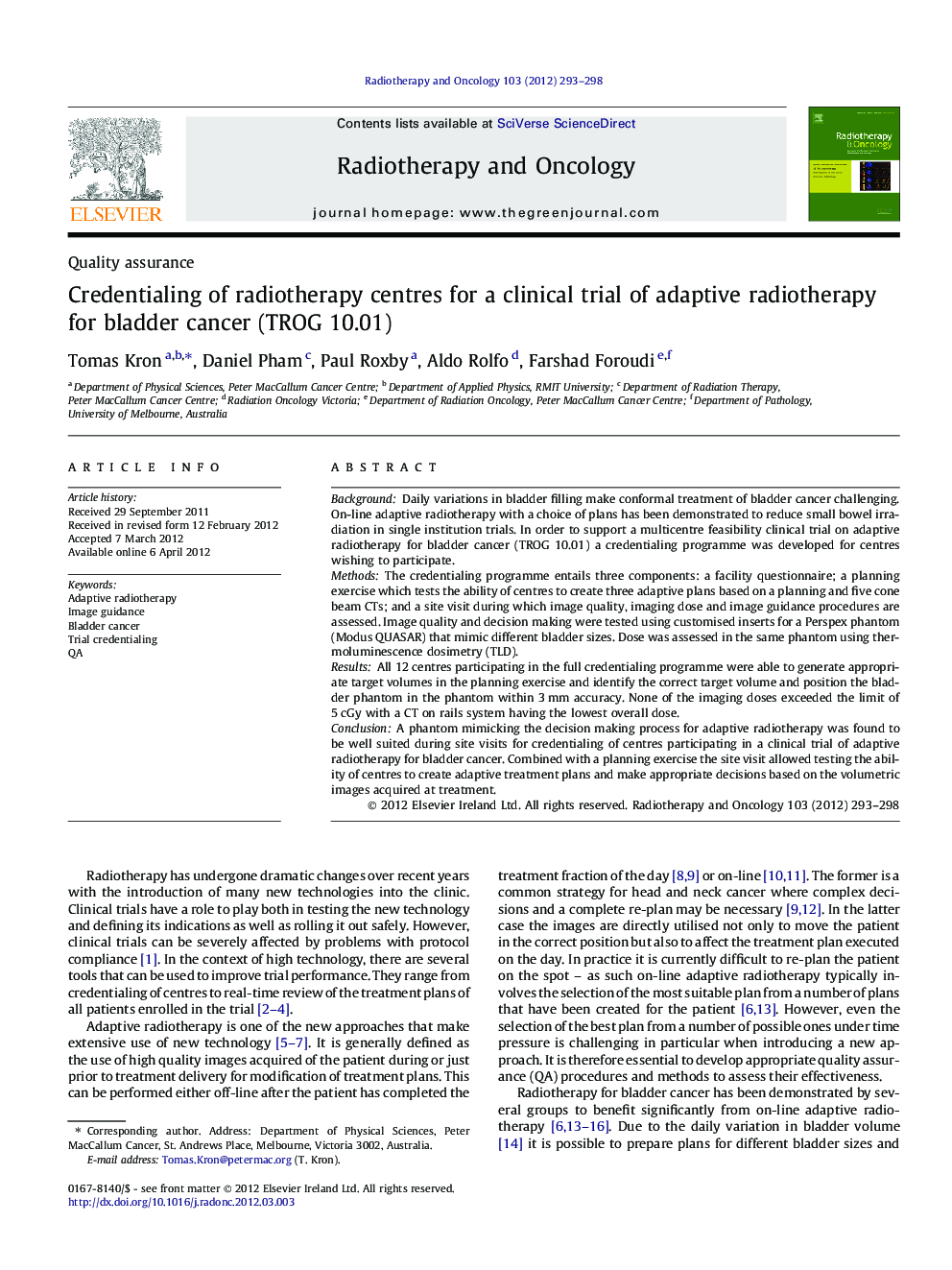| Article ID | Journal | Published Year | Pages | File Type |
|---|---|---|---|---|
| 2158216 | Radiotherapy and Oncology | 2012 | 6 Pages |
BackgroundDaily variations in bladder filling make conformal treatment of bladder cancer challenging. On-line adaptive radiotherapy with a choice of plans has been demonstrated to reduce small bowel irradiation in single institution trials. In order to support a multicentre feasibility clinical trial on adaptive radiotherapy for bladder cancer (TROG 10.01) a credentialing programme was developed for centres wishing to participate.MethodsThe credentialing programme entails three components: a facility questionnaire; a planning exercise which tests the ability of centres to create three adaptive plans based on a planning and five cone beam CTs; and a site visit during which image quality, imaging dose and image guidance procedures are assessed. Image quality and decision making were tested using customised inserts for a Perspex phantom (Modus QUASAR) that mimic different bladder sizes. Dose was assessed in the same phantom using thermoluminescence dosimetry (TLD).ResultsAll 12 centres participating in the full credentialing programme were able to generate appropriate target volumes in the planning exercise and identify the correct target volume and position the bladder phantom in the phantom within 3 mm accuracy. None of the imaging doses exceeded the limit of 5 cGy with a CT on rails system having the lowest overall dose.ConclusionA phantom mimicking the decision making process for adaptive radiotherapy was found to be well suited during site visits for credentialing of centres participating in a clinical trial of adaptive radiotherapy for bladder cancer. Combined with a planning exercise the site visit allowed testing the ability of centres to create adaptive treatment plans and make appropriate decisions based on the volumetric images acquired at treatment.
